Sambhar Lake, Rajasthan: Thousands of birds have been found dead around Rajasthan’s Sambhar Lake, the largest inland salt-water body in India, and experts suspect illegal salt mining activities in the area to be the cause.
There is only one factory at Sambhar Lake that manufactures salt — Hindustan Salts Limited, a public sector company, has been operating here since 1958. But there are thousands of fly-by-night illegal extractors of salt operating around the lake. Could their activities have brought about this catastrophe on the birds?
In the four days since the tragedy came to light, a number of theories have been postulated. Preliminary reports prepared by microbiologist A.K. Kataria, professor at Bikaner’s Rajasthan University of Veterinary and Animal Sciences, suggest avian botulism as the cause, based on the symptoms.
However, Dr Arvind Mathur, a veterinary doctor specialising in wildlife medicine who has been brought in from Jaipur Zoo to assess the situation, tells this writer that a possible cause for the deaths could be high sodium levels in the birds leading to paralysis.
Research from wildlife biologists in other countries points to the fact that food sources for migratory birds could greatly decline with low water levels and high salt content in salt water lakes that could have led to the mass deaths. This, coupled with Mathur’s assessment, seems to point fingers towards illegal mining.
Also read: Human beings are pushing larger animals like rhinos & elephants to extinction faster
Death looms at ground zero
At ground zero, it is Day 4 since the tragedy was first discovered by local volunteers from two NGOs who have been coming to the lake for years for bird watching. The number of dead birds increases by the minute, even as a white mist sets in, giving the lake an almost surreal appearance.
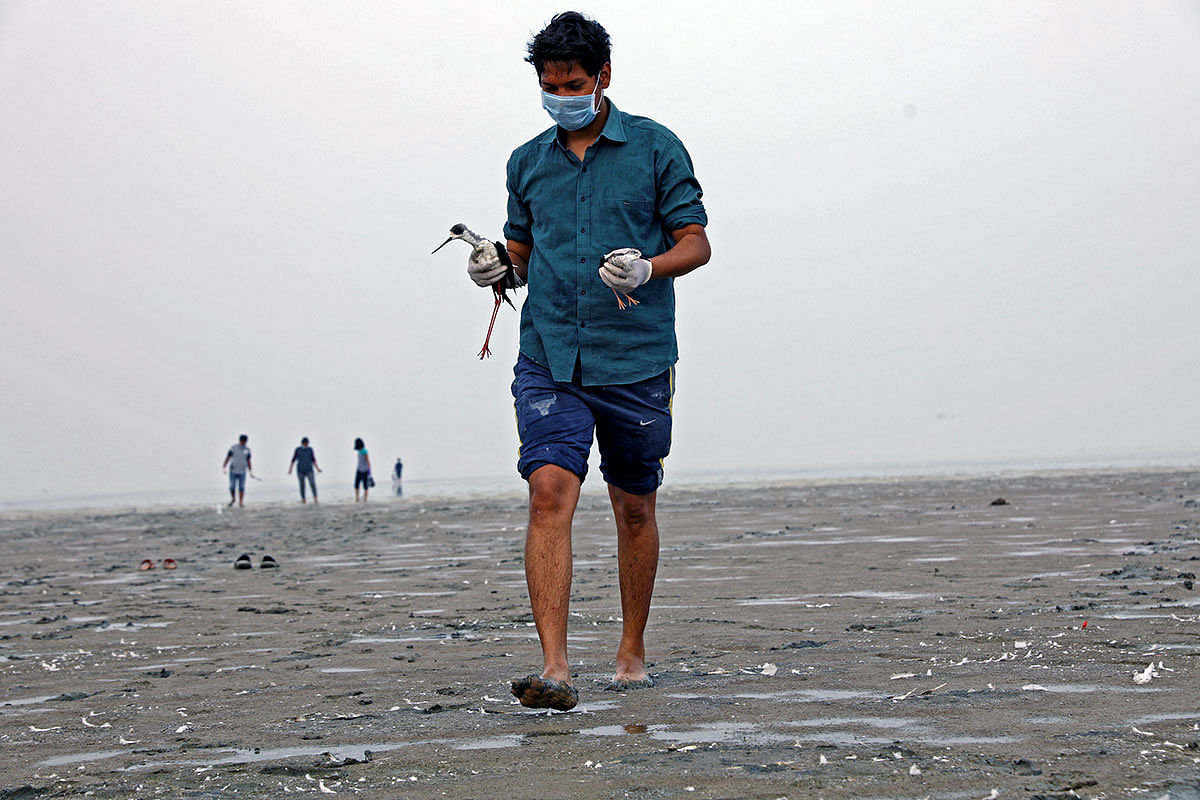
Death looms everywhere, manifested in the smell of rotting flesh and maggots infesting the birds’ bodies that are being brought in.
On the sandy edge of the lake, the Rajasthan government’s swift reaction can be witnessed — forest department jeeps are everywhere. Divisional Forest Officer Kavita Singh is on location, keeping an eye on rescue efforts between the lake, the site of the tragedy, and the makeshift rescue centre that is 20 km away in the small town of Phulera.
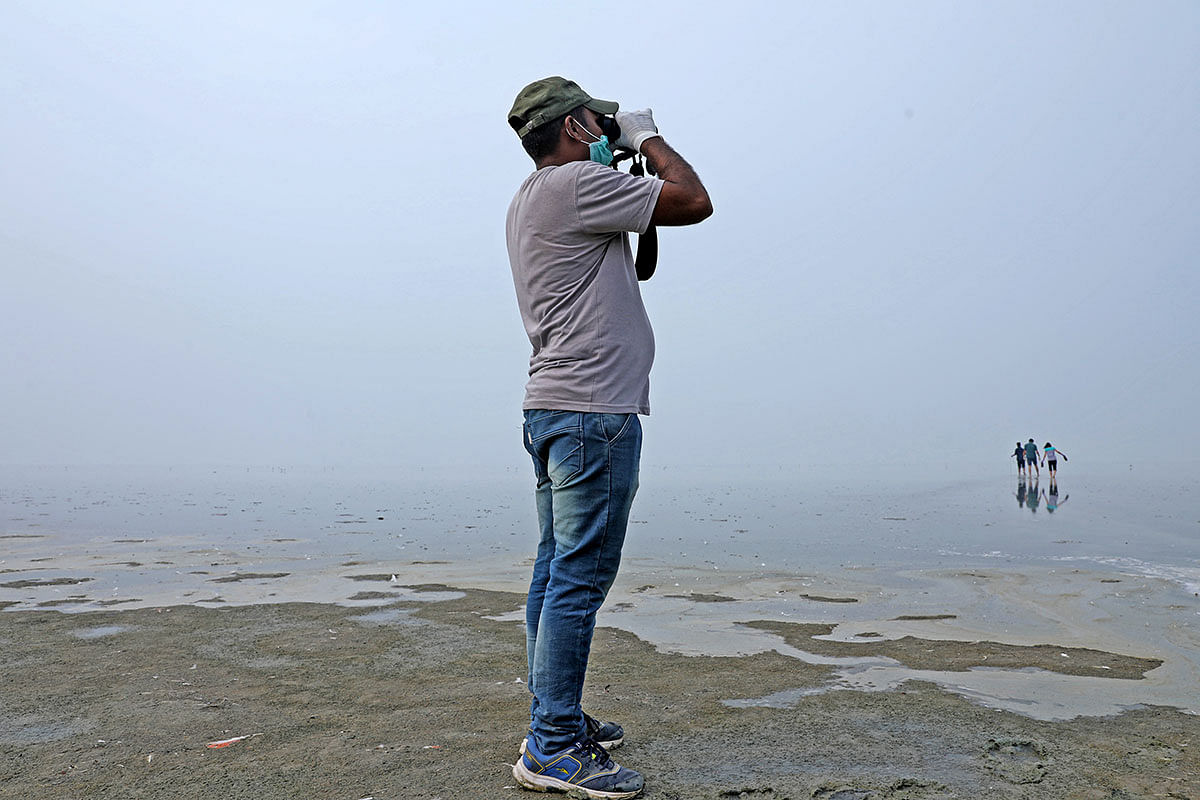
A team of veterinary doctors from the Bikaner animal husbandry department has been pressed into service. Another team from the Wildlife Institute of India has arrived and is collecting water samples to check for possible chemical poisoning. The results of this test are imperative, as they will provide some clues about what caused the en-masse deaths across species.
But beyond that, everyone seems clueless. Kataria, who has assessed the cause of deaths to be avian botulism, is awaiting lab results to confirm this diagnosis. But he adds: “I am not sure if we have the necessary toxins to test for botulism in our labs in India.”
A team of volunteers led by local birding enthusiast Dinesh Yadav wades into the water. Visibility is a mere 50 metres; beyond that must lie many dead birds, but it’s impossible to wade into the slippery, swampy mud without getting stuck.
It is because of the hard work of this team that the rescue work has carried on — Abhishek Vaishnav, Sugandha Acharya, Purnesh Kulshreshtha and Omprakash Sain all are part of a local bird-watching group, who set out every morning for the depressing task of counting dead birds and ferrying sick ones to the rescue centre. If it weren’t for this team and their NGO, the tragedy would have gone unnoticed. They were the first to ring the alarm bells, pressing the state machinery to action.
Three birds, half-dead, are brought in by Dinesh and put in a cardboard box. There is only one cardboard box to carry the birds back and forth. Forest department staff members wait for more live birds to be brought in before the evacuation can begin to the rescue centre.
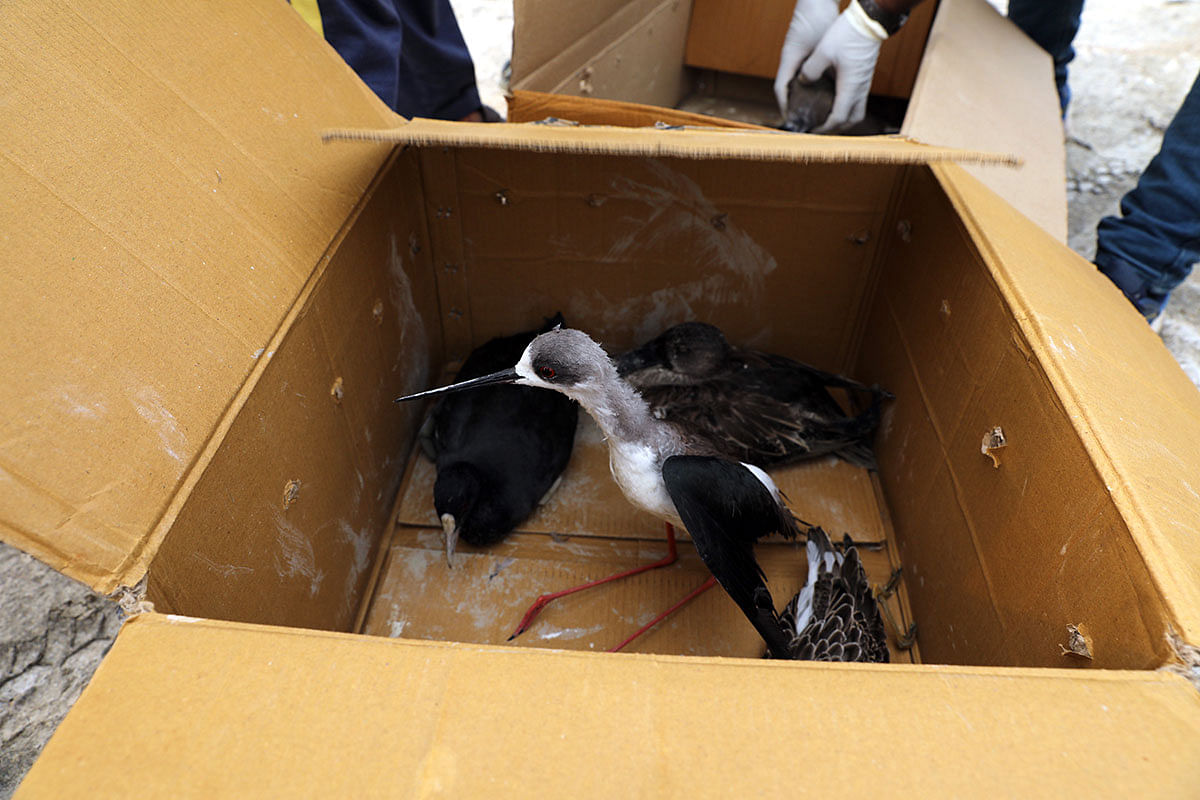
As the volunteers walk further, a tractor follows, full of dead birds. A man scoops up the bodies in the tractor — these will be buried in the sand some distance from the lake to ensure there is no spread of infection.
Even the retrieval of bodies is not easy, it requires wading into the swampy marsh of the lake, fishing them out and bringing them back to the edge. With just three volunteers, it could take days.
Illegal salt mining
In 2015, a distraught general manager of Hindustan Salts Limited’s subsidiary Sambhar Salts Ltd wrote a letter to the chief minister of Rajasthan, with copies to several civil servants in the state and Delhi.
He said private players had dug thousands of borewells, some as deep as 500 feet, to draw saline water illegally from the bed of the Sambhar Lake. The GM’s letter pointed out that the company was struggling to produce two lakh tonnes of salt when private players were producing more than 10 times that from its lands. On March 2014, SSL’s accumulated losses stood at over Rs 15 crore. It made a loss of Rs 9 crore in 2014-15, as reported in The Economic Times.
Other media reports in the past have also shown that salt was being extracted illegally by small units — at any given point, more than 10,000 tractors could be seen operating on the lake. That’s why, in 2015, a public interest litigation was filed in the Supreme Court asking for a limitation on the number of illegal borewells in the lake, and the thousands of pipelines in operation. The apex court had directed the Rajasthan government to curb such illegal activities, but locals say despite these orders, illegal operations were thriving on the lake.
Right now, as authorities grapple with the rescue work, no one is willing to answer the tough questions about illegal mining.
Hope floats
The rescue centre in Phulera is located at a small forest department nursery. Around 40 birds, mostly coots, sandpipers and northern shovelers, are being treated by a team of veterinary doctors and volunteers.
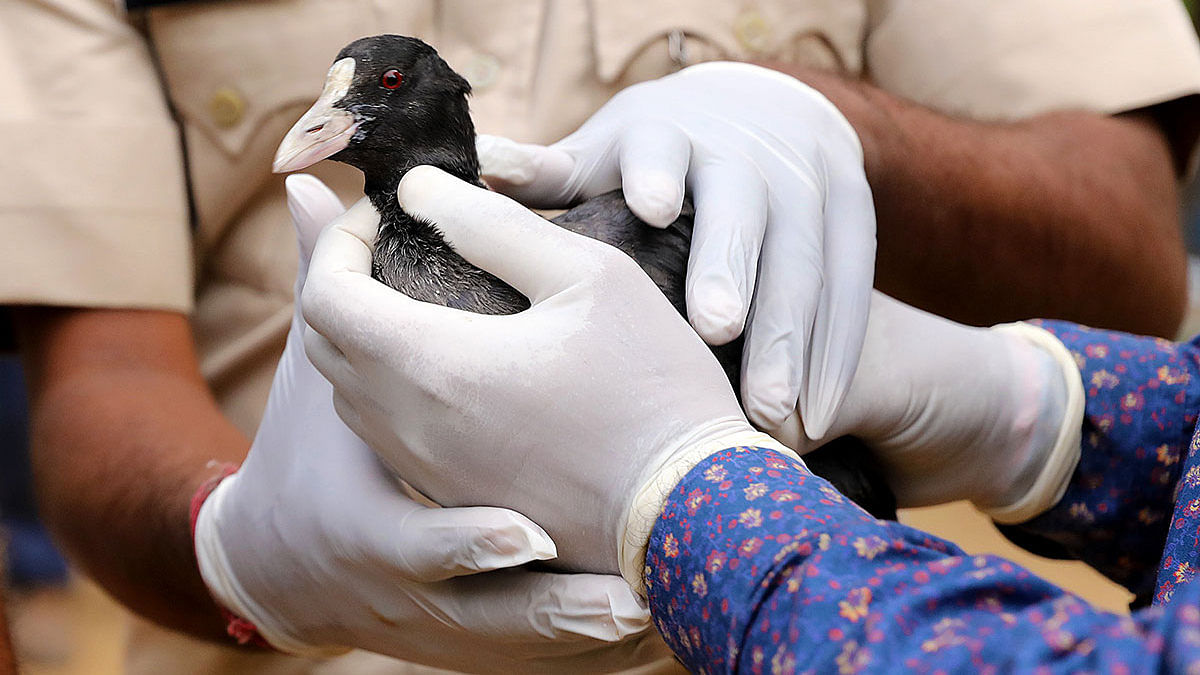
Dr Mathur from Jaipur Zoo releases three coots in a small water tank nearby to make them swim — these are, after all, water birds, he tells this writer.
At the end of a long day of witnessing deaths, the sight of these birds swimming calmly in the water tank brings some relief to the beleaguered rescue teams. One of the birds hasn’t recovered fully yet; she keels over like a badly designed paper boat, only to be gently coaxed by Dr Mathur. The other two birds swim around effortlessly, paddling with their webbed feet. But they cannot be released until it is known what caused the deaths at Sambhar Lake.
While doctors will treat them for high sodium content, there is no possible treatment for human greed, and the hundreds of illegal salt units operating on the lake. The laboratory results may only give indicators; what actually triggered the high sodium content in the birds requires further investigation.
Postscript: At the time of writing this report, the death toll continues to rise. The state disaster rescue teams have been pressed into action, and the chief minister has assured of all possible measures. A number of wildlife groups have arrived on the scene to pitch in with rescue efforts.
Bahar Dutt is an award winning environment journalist.
Also read: Humans are changing Earth in many different ways at once



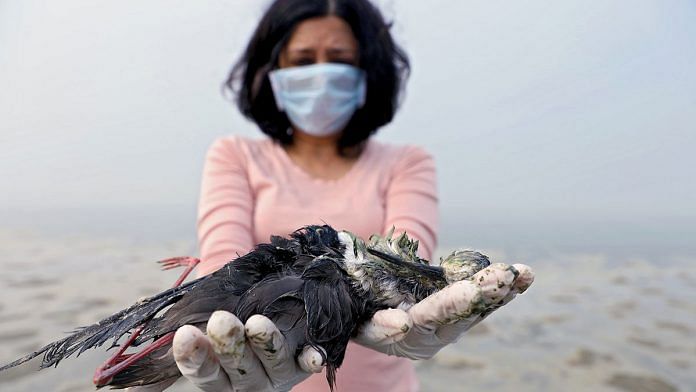



Great job with great thought. No words except feelings with injured birds.
If Human’s perish, this planet will flourish. So sad to see such devastation. We have not left anyone , no water, air, tree, animals, birds in pursuit of greed.
I hope and pray for nature to give back in same manner to the people responsible. It is beyond humans now.
National Nature Society
सांभर में मरी बर्डस का आंकड़ा 15000/से ज्यादा होगा कहा था अभी तक 8000 से अधिक ही मृत बॉडीज उठा पाए हे।
शकमभरी माता मंदिर ओर नावा की तरफ उठाना बाकी हे उच्च न्यायालय के प्रसंज्ञान लेने के बाद संबंधित विभाग वन,पशुपालन, साल्ट व एनजीओ मुस्तैदी से जुट गए हे मुख्य वन्य जीव प्रतपालक की उदासीनता काम को धीमा किए हुए हे
आगामी दिनों में पक्षी प्रवास में ओर पक्षी मरने का अंदेशा है
विश्व विख्यात सांभर झील में मरे हज़ारों पक्षी
रविवार10.11.2019 नेशनल नेचर सोसायटी सचिव राज कुमार चौहान , पक्षी प्रेमियों शिव कौल , किशन मीणा अभिषेक,समाज सेवी सांभर फोटोफेस्ट के आयोजक पवन मोदी और विक्रम शेखावत टीम ने झील की स्थति और प्रवासी पक्षियों की आवक शुरू होने वाली गतिविधियों का अवलोकन करने गए थे तो वहां मौजूदा हजारों की तादाद में पक्षी मरे हुए थे
जिनमे नॉर्थ एशिया, साइबेरिया,आदि से आने वाले एवम् स्थानीय प्रजातियों के पक्षी मरे हुए पाए
कुछ पक्षी तड़प रहे थे
रामसर साइट के नाम से प्रख्यात इस वेट लैंड में इतनी बड़ी त्रासदी होने से पक्षी प्रेमियों ने प्रशासन को तुरन्त जानकारी दे जाच करने ओर मरणासन्न अवस्था में पड़े पक्षियों को तुरन्त रेस्क्यू करने को कहा
करीब 25 प्रजातियों के पक्षी मरे देखे गए